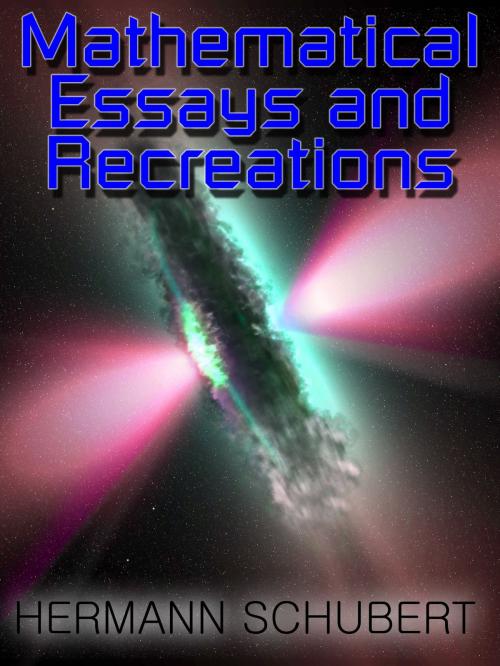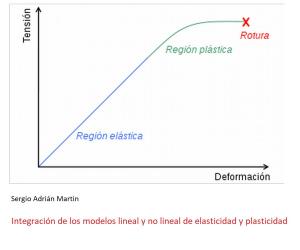Mathematical Essays and Recreations - From The Egyptians, Babylonians, and Greeks to Modern Day
Nonfiction, Science & Nature, Mathematics, Number Systems, Number Theory, Science, Physics, Mathematical Physics| Author: | Hermann Schubert | ISBN: | 1230000158997 |
| Publisher: | Schubert | Publication: | August 10, 2013 |
| Imprint: | Language: | English |
| Author: | Hermann Schubert |
| ISBN: | 1230000158997 |
| Publisher: | Schubert |
| Publication: | August 10, 2013 |
| Imprint: | |
| Language: | English |
Many essays have been written on the definition of number. But most of them contain too many technical expressions, both philosophical and mathematical, to suit the non-mathematician. The clearest idea of what counting and numbers mean may be gained from the observation of children and of nations in the childhood of civilization.
When children count or add, they use either their fingers, or small sticks of wood, or pebbles, or similar things, which they adjoin singly to the things to be counted or otherwise ordinally associate with them. As we know from history, the Romans and Greeks employed their fingers when they counted or added. And even to-day we frequently meet with people to whom the use of the fingers is absolutely indispensable for computation.
Still better proof that the accurate association of such “other” things with the things to be counted is the essential element of numeration are the tales of travelers in Africa, telling us how African tribes sometimes inform friendly nations of the number of the enemies who have invaded their domain. The conveyance of the information is affected not by messengers, but simply by placing at spots selected for the purpose a number of stones exactly equal to the number of the invaders. No one will deny that the number of the tribe’s foes is thus communicated, even though no name exists for this number in the languages of the tribes. The reason why the fingers are so universally employed as a means of numeration is, that everyone possesses a definite number of fingers, sufficiently large for purposes of computation and that they are always at hand.
Besides this first and chief element of numeration which, as we have seen, is the exact, individual conjunction or association of other things with the things to be counted, is to be mentioned a second important element, which in some respects perhaps is not so absolutely essential; namely, that the things to be counted shall be regarded as of the same kind.
Subjects Include:
- Notion and Definition of Number
- Monism in Arithmetic
- On the Nature of Mathematical Knowledge
- The Magic Square
- Archimedes
- The Fourth Dimension
- Mathematical and Spiritualistic
- The Concept of Dimension
- The Introduction of the Notion of Four-Dimensional Point-Aggregates, Permissible
- The Introduction of the Idea Of Four-Dimensioned Point-Aggregates Of Service To Research.
- Refutation of The Arguments Adduced To Prove The Existence Of A Four-Dimensioned Space Inclusive of The Visible World
- Examination of the Hypothesis Concerning The Existence of Four-Dimensional Spirits.
- The Squaring of the Circle
- Universal Interest In The Problem
- Nature Of The Problem
- The Egyptians, Babylonians, and Greeks
- The Romans, Hindus, Chinese, Arabs, And The Christian Nations To The Time Of Newton
- From Newton To The Present
Many essays have been written on the definition of number. But most of them contain too many technical expressions, both philosophical and mathematical, to suit the non-mathematician. The clearest idea of what counting and numbers mean may be gained from the observation of children and of nations in the childhood of civilization.
When children count or add, they use either their fingers, or small sticks of wood, or pebbles, or similar things, which they adjoin singly to the things to be counted or otherwise ordinally associate with them. As we know from history, the Romans and Greeks employed their fingers when they counted or added. And even to-day we frequently meet with people to whom the use of the fingers is absolutely indispensable for computation.
Still better proof that the accurate association of such “other” things with the things to be counted is the essential element of numeration are the tales of travelers in Africa, telling us how African tribes sometimes inform friendly nations of the number of the enemies who have invaded their domain. The conveyance of the information is affected not by messengers, but simply by placing at spots selected for the purpose a number of stones exactly equal to the number of the invaders. No one will deny that the number of the tribe’s foes is thus communicated, even though no name exists for this number in the languages of the tribes. The reason why the fingers are so universally employed as a means of numeration is, that everyone possesses a definite number of fingers, sufficiently large for purposes of computation and that they are always at hand.
Besides this first and chief element of numeration which, as we have seen, is the exact, individual conjunction or association of other things with the things to be counted, is to be mentioned a second important element, which in some respects perhaps is not so absolutely essential; namely, that the things to be counted shall be regarded as of the same kind.
Subjects Include:
- Notion and Definition of Number
- Monism in Arithmetic
- On the Nature of Mathematical Knowledge
- The Magic Square
- Archimedes
- The Fourth Dimension
- Mathematical and Spiritualistic
- The Concept of Dimension
- The Introduction of the Notion of Four-Dimensional Point-Aggregates, Permissible
- The Introduction of the Idea Of Four-Dimensioned Point-Aggregates Of Service To Research.
- Refutation of The Arguments Adduced To Prove The Existence Of A Four-Dimensioned Space Inclusive of The Visible World
- Examination of the Hypothesis Concerning The Existence of Four-Dimensional Spirits.
- The Squaring of the Circle
- Universal Interest In The Problem
- Nature Of The Problem
- The Egyptians, Babylonians, and Greeks
- The Romans, Hindus, Chinese, Arabs, And The Christian Nations To The Time Of Newton
- From Newton To The Present















